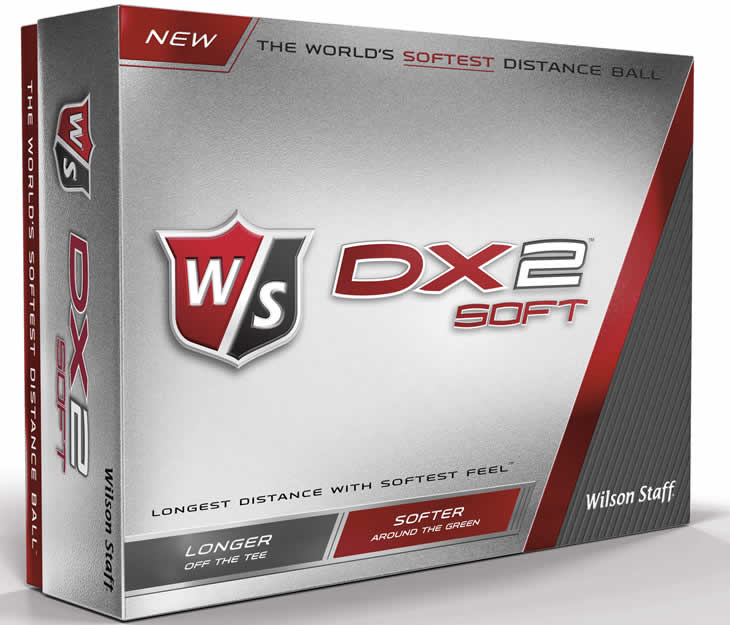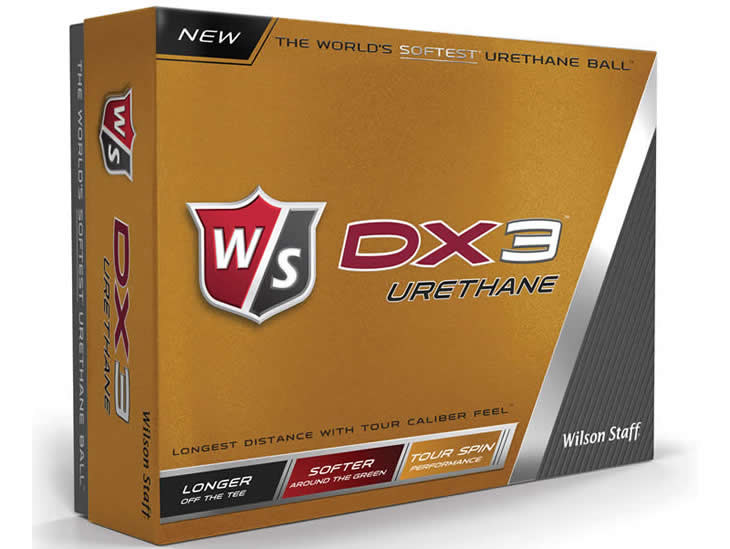At the PGA Show in Orlando I caught up with Frank Simonutti, the Global Director of Innovation for Wilson Staff Golf Balls, to find out about the company's commitment to soft feel and low compressions in its golf ball line up.

Hi Frank. Do you think golf balls are generally getting softer and if so, why would that be?
Yes and I think they are getting softer because it works. We’ve been doing soft golf balls, albeit harder than our current soft balls, since 1997 with the Titanium Soft Spin and in those days soft meant an 80 compression. Today there won’t be two-piece premium ball in the market that is more than an 80 compression.
Is that because of manufacturing techniques or because there’s a performance benefit?
It’s a performance benefit. We’ve tested hundreds of golfers over the years all across the handicap range and in blind testing over 70% will pick the softer golf ball and it doesn’t matter whether they are a good player or bad player, they prefer the feel of the softer ball.
Are choosing these balls for feel more than any other reason?
Yes. A golf ball still has to perform and still has to have distance because you are not going to play a ball that feels good but that is 15 yards shorter, so the ball has to compete from a distance standpoint. All balls are regulated by R&A and USGA rules, you have velocity requirements and you have an overall distance requirement.
Balls spin differently, but you and I can’t tell if a ball spins more and in our view most golfers don’t need higher spin which would increase hooks and slices, but the feel aspect is something that pretty much golfers of all level can perceive.
Is there a trade-off in performance between a softer feeling, lower compression ball and a harder ball?
No. You still have to design for a certain performance level so you start at distance. Our DX2 Soft is the softest golf ball on the market with a 29 compression and it has the lowest spin rate and highest launch angle off the tee, which means it will hook and slice less and is easier to get the ball in the air, which is what most golfers need.

The DX3 Spin is a 3-piece golf ball where we have a very, very soft core that is sub zero compression to keep the spin rate low. Then you have the outer two layers, which as the club speed lessens with the 8 irons, 9 irons and wedges, takes the core out of play. These are the primary components so you can increase your spin on approach shots by up to 10% over the DX2 Soft.
The Urethane balls are for your much better players and they are a higher price. You can work these balls left to right and right to left so they are much higher spinning balls with more control over approach of another 10%.
How does Wilson measure compression?
The measurement of compression on a golf ball is simply the deformation of a ball when you apply a load to it. Our measurement, as is Callaway’s and a couple of others, is to put a 200lb load on the ball and every 1/1000th of an inch equals one point of compression. A ball that doesn’t compress at all it is 180 compression so every 1/1000th of inch drops you one point from the 180 starting point to give you the numbers quoted.
The scale is called the PGA scale, which goes back to the original spring loaded Atti machines that used to do the testing, but those are now all gone and everybody uses a compression tester for plastic. The differences come in as not all manufacturers use the same amount of load.
We use 200lbs and Callaway use 200lbs, but Bridgestone does an initial load of 22lb then they measure it at 287lb (130kg) so it is 265lb, but it is measured after the initial load.
I’m not really sure what Srixon use but my guess is they are 100kg which is 220lb’s and I’m not sure what load Titleist use. Either way, no matter which compression test you use a softer golf ball is going to have a lower compression. Instead of 55 it may read 40 on a Bridgestone test for example.
Why hasn’t anybody come up with a standardised test, for example one of the governing bodies?
Because it is not relevant to performance. The governing bodies care about symmetry, overall distance and initial velocity and obviously size and weight. Construction of the ball contributes to these factors, but the governing bodies only regulate on the actual performance.
What advancements have been made in technology to enable you to lower compression without sacrificing any performance?
A lot of work has been done. Wound balls used to be the premium golf balls, but they went away around 2000 and the reason for that was that Tiger Woods left Titleist for Nike and switched from the Titleist Professional to the Nike ball, so suddenly your longest hitter was hitting a solid core ball and putting up with difference in feel that that entailed.
So everybody followed and players used to playing wound balls were all of a sudden playing a harder ball so there was a drive to soften the feel of these solid core balls.
Between some changes in core chemistry and some soft high resilience materials made by the DuPont company specifically for golf balls, whose goal was to take the lion’s share of the business of the rubber, which make up 80% of the ball.
They haven’t been able to do that except in the current Nike RZN balls, but the materials adapted very well to the inner cover layer of golf balls as they were soft and they gave you speed, so the tools to make the ball softer were now available.
In your own Wilson range is there any technology you've introduced that has enabled you to make a specific leap?
We were the first people to work with DuPont on this material it is called HPF for high performance. We introduced the material initially in 2003 in the True Tour ball, which was a cast rubber covered ball. It has been in one version of our balls pretty much since.
We’ve had the True Tour V, the True Tour Elite, the original DX3 Soft and now we have introduced it into the DX3 Urethane. We just try to stay ahead of the game and whenever DuPont does have a new material we are amongst the first to get samples of it.
So is yours an exclusive relationship with them?
No, it is not exclusive because DuPont doesn’t want to be held to a single customer and I’d imagine although we were the first probably most manufacturers now use some DuPont products.
Can you tell us about some of the new products you’ve got?
The Wilson Staff DX3 Urethane is a cast urethane 3-piece ball with a 55 compression. It is the softest sealing urethane ball on the market because our testing shows that good players like a soft feel too.

What does the urethane give you?
The urethane is there to give it the spin. This a Tour ball, which together with our FG Tour and balls like the Titleist Pro V1 and the Bridgestone B330, all use a form of urethane. These are the balls for the tournament type players who want to work the ball. The reason we can only get down to a 55 compression in this ball, which is a lot harder than some of our other balls, is that urethane is a lousy material for distance to be quite honest.
It is in there for spin, you make it as thin as possible, and the cover on this ball is roughly 1mm thick. The better the golfer the harder we’ve had to make the ball to get the performance we’ve wanted. We 100% believe in soft feel, but we are not going to provide a ball that doesn’t perform just to hit a soft compression number.
It seems that softer balls sometimes appear to be aimed at a price point, but if money was no object which would be the best ball for most people within your range?
Everybody plays differently. I still say that unlike other brands, the DX2 Soft is the best ball for most people. Guys who need to hit the ball straighter, which is a lot of players, should use this as it will be straighter for them. OK, you won’t get as much spin around the green but I’ll tell you it is a whole lot easier to hit the greens from the fairway with good spin than to hit them from the rough with a really high spinning golf ball.
Then you get players who are fairly straight but want more control, so they should go for the DX3 Spin and then you get to the tournament players who want to work it and hit every fairway anyway, so that is when you go to the DX3 Urethane.